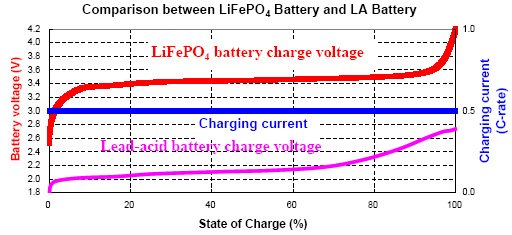That curve is totally wrong. LiFePO4 cells hit peak SOC at 3.65V. 4.2V would be complete destruction.You know that LFP batteries are a type of li-ion battery, right?
They're not. The voltage curves are different:

And even if you could match the curves exactly, the problem is that lead acid needs to be stored at close to 100% SoC for maximum life, whereas LFP likes to be stored at something far less than close to 100% SoC. So you need to tell the charging system to not top off the battery all the time. If this chemistry were so great and it could just be used as a direct drop-in replacement and have OEM reliability, Tesla would have just used it as the OEM battery and wouldn't have redesigned anything else.
Also, LiFePO4 prefers 100% SOC (read up on official Tesla LFP battery procedure) but does not require constant float like lead acid due to significantly lower self discharge and a good BMS will prevent constant float charge degredation.


